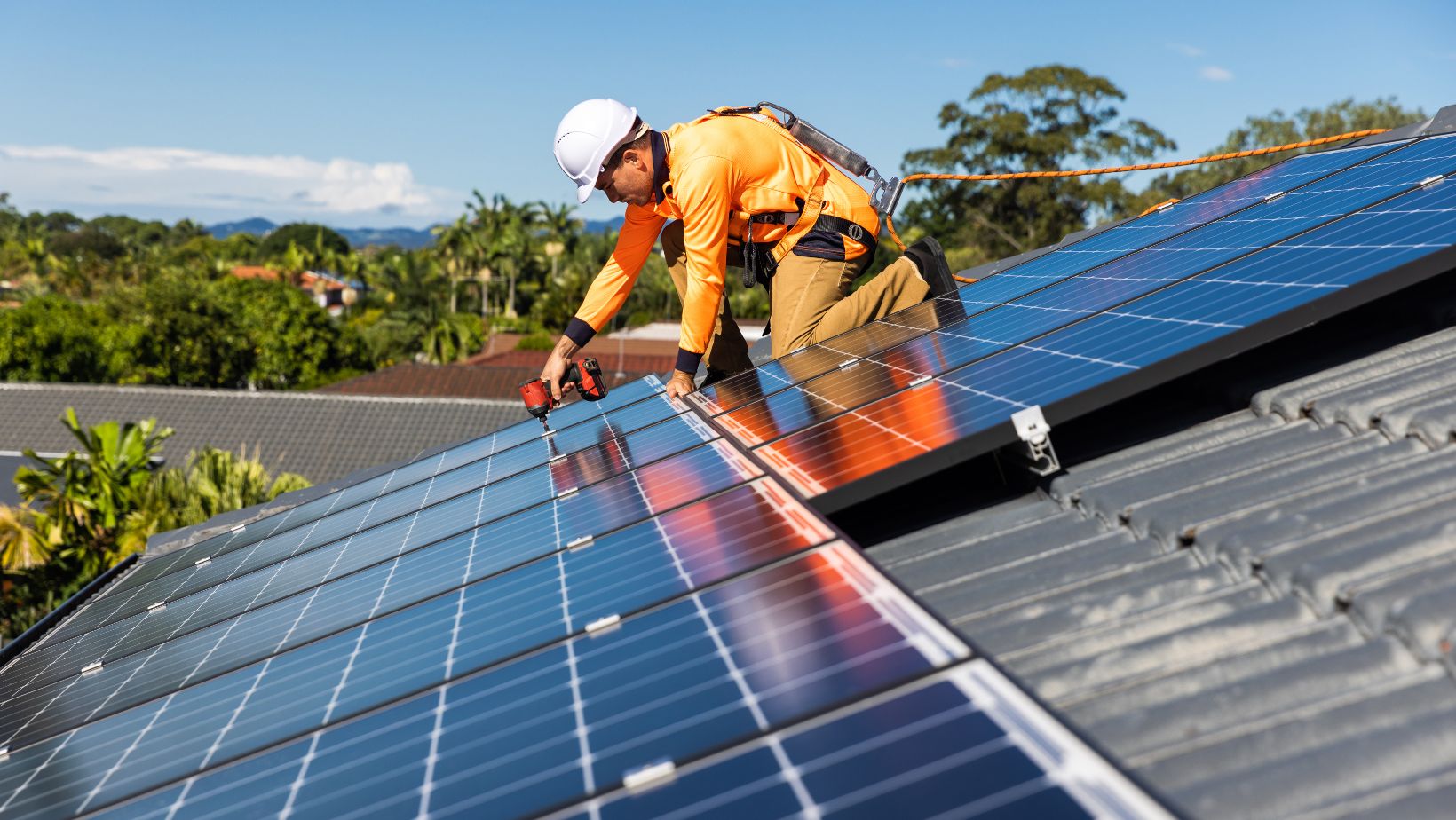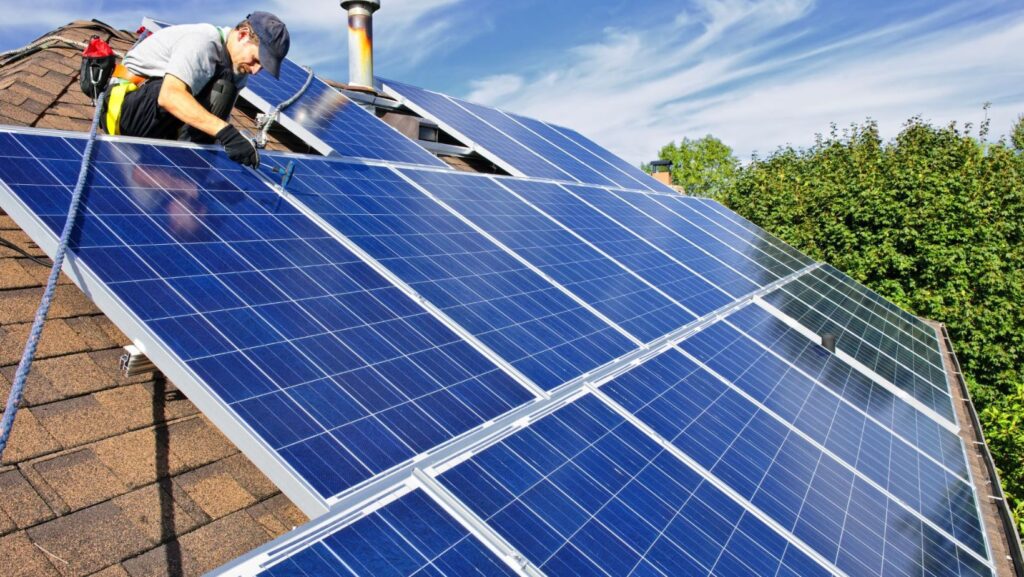Have you ever wondered if solar panels are the right choice for your home? With rising energy costs and environmental concerns becoming more pressing, many homeowners are exploring renewable energy options. But before leaping, it’s essential to understand your specific energy needs. This involves looking at how much energy your household consumes and considering seasonal changes and future lifestyle adjustments. Doing so lets you make a well-informed decision about whether solar panels will truly benefit you in the long run. Let’s dive into what you need to know to get started on this journey towards sustainable living.
Understanding Your Energy Needs
According to Sun Valley Solar Solutions experts, understanding your home’s energy needs is crucial in determining whether solar panels are a safe investment for you. By assessing your energy consumption, you can make informed decisions about the size and type of solar panel system that best suits your household. Start by reviewing your past utility bills to calculate your average energy usage. This involves looking at the kilowatt-hours (kWh) consumed each month over the past year. It’s important to consider seasonal changes, as energy needs often fluctuate with winter heating and summer cooling. Additionally, consider any potential future energy needs increases, such as adding new appliances or expanding your home.
To accurately gauge your energy consumption, keep these factors in mind:
- Review Past Utility Bills: Analyze at least 12 months of bills to get an accurate picture of your average usage.
- Consider Seasonal Variations: Account for higher usage during extreme weather conditions.
- Plan for Future Changes: Anticipate lifestyle changes that might increase energy consumption.
By understanding these elements, you can better assess how solar panels meet your current and future energy demands. This proactive approach helps select the right system size. It ensures that you maximize the benefits of solar energy over time.
Evaluating Property Suitability for Solar Panels
When considering the installation of solar panels, it’s essential to evaluate your property’s suitability to ensure optimal efficiency. Several factors can influence how well solar panels perform in your home. One of the primary considerations is the orientation of your roof. Ideally, roofs facing south in the northern hemisphere capture the most sunlight throughout the day, maximizing energy production. Shading from nearby trees or buildings can significantly reduce a panel’s output. It’s crucial to assess any potential obstructions that might cast shadows on your panels during peak sunlight hours.

The local climate also plays a role in determining solar panel efficiency. Areas with frequent overcast weather or heavy snowfall might experience reduced solar output compared to sunnier regions. Professional assessments are invaluable for accurately gauging your property’s potential for solar energy. Installers often use advanced tools and technologies like solar pathfinders and drone imaging to analyze and optimize panel placement. These assessments help identify the best locations on your property for installation, ensuring you get the most out of your investment.
Financial Incentives and Cost Considerations
Understanding the financial incentives available for solar panel installation can significantly impact your decision. Both federal and state governments offer a variety of incentives to encourage homeowners to switch to renewable energy. These include tax credits and rebates, which can substantially lower the initial cost of solar panel systems. For instance, the federal solar tax credit allows you to deduct 30% of the cost of installing a solar energy system from your federal taxes. Additionally, many states offer tax credits and rebates, varying depending on your location. By taking advantage of these incentives, you can reduce the upfront investment required for solar panels, making it a more accessible option for many homeowners.
The concept of return on investment (ROI) is crucial when evaluating the financial viability of solar installations. Calculating ROI involves assessing how long it will take for the savings on your electricity bills to exceed the initial costs of installation. To determine this, subtract any applicable incentives from the total installation cost and divide by your expected annual savings on energy bills. This calculation will give you an estimate of how many years it will take to recoup your investment. With rising electricity prices and potential increases in home value due to solar panels, many homeowners find that their ROI period is shorter than anticipated. By carefully analyzing these factors, you can decide whether solar panels are a wise financial choice for your home.
Choosing the Right Solar Panel System
When choosing the right solar panel system for your home, understanding the differences between monocrystalline and polycrystalline panels is crucial. Monocrystalline panels are known for their high efficiency and longevity, making them popular for homeowners looking to maximize energy production in limited space. However, they tend to be more expensive than polycrystalline panels, which offer a more budget-friendly option with slightly lower efficiency. It’s essential to weigh these factors against your specific energy needs and budget constraints.
Another critical consideration is selecting the appropriate system size. Your solar panel system should be tailored to meet your household’s average energy consumption, taking into account any potential increases in usage over time. Additionally, consider whether you want to incorporate battery storage options. Batteries can store excess energy generated during sunny days at night or power outages, providing greater energy independence. While this adds to the initial investment, it can enhance your solar setup’s overall efficiency and reliability.
Installation Process and Professional Services
When embarking on installing solar panels, understanding the installation process is crucial. It begins with an initial consultation where a professional assesses your property’s suitability for solar energy. This step involves evaluating roof orientation, shading, and local climate conditions. Once the assessment is complete, a tailored plan is developed to optimize the placement of solar panels for maximum efficiency. The installation process itself includes several key steps:
- Site Assessment: A thorough examination of your property to determine the best location for solar panel installation.
- Design and Permitting: Creating a customized design and obtaining necessary permits from local authorities.
- Installation: Professional technicians install the panels, ensuring they are securely mounted and connected to your electrical system.
- Inspection: A final inspection ensures everything meets safety and performance standards.
Choosing experienced professionals with relevant certifications is essential for a successful solar panel installation. Certified installers bring expertise and offer peace of mind through warranties and maintenance services. These warranties typically cover the panels and their performance over time, ensuring that issues are addressed promptly. Additionally, many installers provide maintenance packages that include regular cleaning and system checks to keep your solar panels operating at peak efficiency. By investing in professional services, you can enjoy long-term benefits while minimizing potential challenges associated with solar energy systems.
Long-term Benefits of Solar Panels
Investing in solar panels can lead to substantial savings on your electricity bills over time. By harnessing the sun’s power, you can significantly reduce or even eliminate your reliance on traditional energy sources, which often come with fluctuating costs. Many homeowners have reported saving thousands of dollars annually after installing solar panels. These savings accumulate as the system continues to produce energy for 20 to 30 years, providing a long-term financial benefit. Additionally, with net metering programs available in many states, you might earn credits for excess energy produced by your system, further enhancing your savings.
Beyond financial benefits, solar panels offer significant environmental advantages. By reducing your dependence on fossil fuels, you contribute to a decrease in greenhouse gas emissions and help combat climate change. This shift towards renewable energy supports a healthier planet and enhances your home’s value. Studies have shown that homes with solar panels sell for more than those without. Potential buyers are often attracted to properties with lower utility bills and a reduced carbon footprint. Thus, installing solar panels is an investment in your home’s energy efficiency and future market value.
Potential Challenges and Considerations
When considering solar panels for your home, it’s natural to have concerns about the initial investment. The upfront costs can be substantial, often ranging from $10,700 to nearly $17,000, depending on various factors such as location and system size.

However, there are ways to mitigate these expenses. Many homeowners explore financing options like solar loans or power purchase agreements (PPAs), which allow you to pay for the system over time rather than all at once. Additionally, federal and state incentives, including tax credits and rebates, can significantly reduce the initial financial burden. It’s worth researching these options to make solar energy more accessible.
Another consideration is the maintenance of solar panels and their impact on your home’s aesthetics. While solar systems generally require minimal upkeep, occasional cleaning and monitoring are necessary to ensure optimal performance. Some homeowners worry about how panels might alter the appearance of their property. Consider alternative installation methods such as ground-mounted systems or innovative designs that blend with your roofline to address this. Moreover, many states offer property tax exemptions for homes with solar installations, which can offset any potential increase in property taxes due to higher home value assessments. By weighing these factors and exploring available solutions, you can make an informed decision that aligns with your financial goals and aesthetic preferences.
Summary
Understanding your energy needs is essential when considering solar panels for your home. By analyzing your past utility bills and accounting for seasonal variations, you can determine your household’s average energy consumption. This information helps in selecting the right size and type of solar panel system to meet both current and future energy demands. It’s also wise to consider any potential changes in your lifestyle that might increase energy usage, such as new appliances or home expansions.
Evaluating your property’s suitability for solar panels is another crucial step. Factors like roof orientation, shading from trees or buildings, and local climate conditions affect how effective solar panels are on your home. Professional assessments using tools like solar pathfinders can help optimize panel placement, ensuring maximum efficiency. Additionally, financial incentives such as tax credits and rebates can make solar installations more affordable, while calculating the return on investment helps you understand the long-term financial benefits of switching to solar energy.


More Stories
AT&T Home Tech: Transform Your Space with Smart Living Solutions Today
Smart Homes in 2025: How IoT is Making Our Homes More Efficient
How Robotic Lawn Mowers Work—And What Makes Airseekers Tron Stand Out